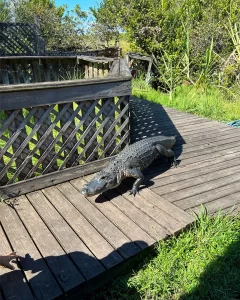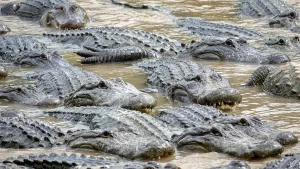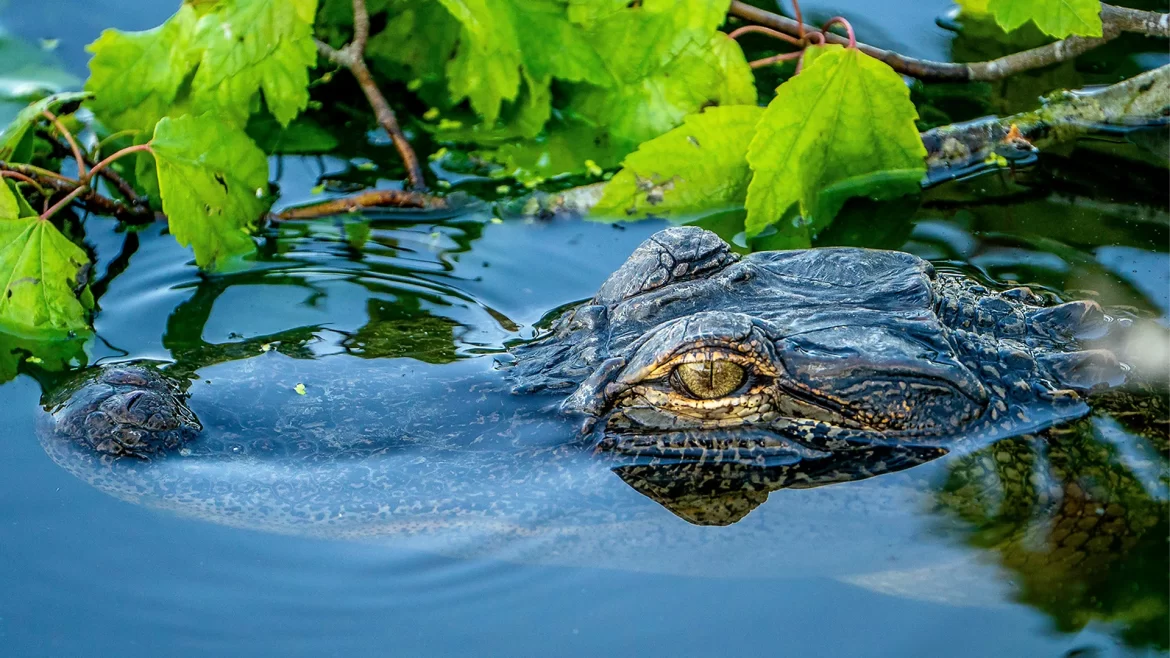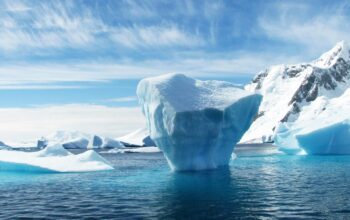In the heart of Florida's Everglades, American alligators (Alligator mississippiensis) play a key role as "ecosystem engineers." Their ability to change the landscape has a fundamental impact on the biodiversity and health of this unique wetland environment.
Alligator Pits: Oases of Life in the Dry Season
During the dry months, when the water level drops, alligators dig holes, known as "alligator pits." These depressions retain water and become a refuge for various species of fish, amphibians, and other aquatic organisms. Thanks to these pits, many species survive dry periods that could otherwise be fatal for them. .
Nests as elevated refuges
In addition to pits, alligators build nests of mud, grass, and twigs that serve as elevated places in otherwise flooded land. These nests provide space not only for their own eggs, but also for other species of reptiles and plants that are sensitive to excessive flooding.

Impact on food chains
As apex predators, alligators regulate the populations of their prey, thereby maintaining balance in the ecosystem. Their presence affects the diversity and abundance of species in the Everglades, which is important for the overall health of this environment. .
ligator as water guardian
After decades of demonization, alligators are finally getting the respect they rightfully deserve. Once hunted to the brink of extinction for their fur and sport, they are now emerging as unsung heroes shaping one of the planet's most unique ecosystems - the Florida Everglades. In the eyes of scientists and indigenous people alike, they are no longer just predators. They are architects of nature, protectors of life, and perhaps even unexpected allies in the fight against climate change.
Water oases in the midst of drought
“Alligators are not cold-blooded monsters. They are subtle balancers,” says biologist Christopher Murray. He has spent years observing them in the wild, studying their behavior and impact on the landscape. And now he says what they do is comparable to the impact of beavers in temperate regions—only much more dramatic.
While the beaver builds dams, the alligator digs out so-called gator holes – ponds and lakes that catch the last of the water during the dry season. It is in these places that hundreds of species survive that would otherwise die out – from frogs to water snails to birds and turtles.
Ecosystem engineers
These little pockets of water are not random holes in the mud. Alligators create them purposefully, with surprising precision, and often for generations in the same place. The water they maintain becomes literally a life-giving resource for an entire community of animals. Without alligators, vast swaths of the Everglades would turn into a wasteland during the dry season.
Scientists are increasingly calling them “ecosystem engineers” – creatures whose actions shape the landscape and enable the survival of others. And while their teeth are still awe-inspiring, their true power lies in their ability to shape the environment for others.
Impact on climate and carbon stocks
Retaining water isn't just about animal survival. Wetlands like the Everglades are among the most important carbon sinks on the planet. Every gram of mud that alligators keep underwater traps organic matter and prevents the release of greenhouse gases. This makes them silent allies in the fight against climate change—without them even knowing it.

Are alligators the key to the survival of the Everglades?
At a time when extreme weather, droughts, and invasive species threaten the balance of wetlands, alligators are more important than ever. Their presence literally determines which areas survive and which dry up. And while many people think of danger when they hear the word “alligator,” scientists are increasingly speaking out about the need to protect them.
Not for themselves – but for everything that depends on them.
A silent disaster in motion
For all the power that nature creates for itself, the Everglades are facing an attack they are not prepared for. Not from alligators, not from natural predators. But from man. For centuries, these wetlands were considered barren swamps to be drained, drained, and converted into farmland. And so they have been.
Today, nearly half of the original Everglades is gone. Rivers have been straightened, water flows manipulated, and underground drinking water supplies threatened by pollution and salt from the ocean. What remains is a shadow of the once wild wilderness—and even that teeters on the edge.
The role of conservation: a reversal of nature?
In recent decades, ambitious plans have been developed to restore the Everglades. One of the largest ecological projects in US history is Comprehensive Everglades Restoration Plan (CERP), which seeks to return the natural flow of water to nature, restore wetlands, and stabilize biodiversity.
Alligators don't just play a passive role in this plan. As bioindicators of environmental health, they provide scientists with valuable information about what's going on in the ecosystem. Their numbers, their health, their behavior—all are signals about whether restoration efforts are working or not.

Invasive species and new threats
As the alligators struggle to maintain their balance, new, unwanted residents are entering their home. Invasive species like the black python are wreaking ecological havoc in the Everglades. This snake, native to Southeast Asia, has no natural predators and is multiplying uncontrollably. It eats everything from birds to mammals to young alligators.
Suddenly, the wetlands' greatest predator becomes prey itself.
Scientists and conservationists are scrambling to find a solution, but the invasion has reached a scale that is difficult to stop. Climate change, drought, pollution and invasive species are creating a deadly cocktail for an ecosystem that is crucial to the entire southeastern United States.
The Everglades are not just a "Florida problem"
Losing the Everglades would not only be an ecological blow. It would also threaten drinking water supplies for millions of people, worsen flooding, increase coastal salinity, and lose vast amounts of carbon stored in the soil.
And although this story takes place thousands of miles away, its consequences could reach much wider. Because if we lose one of the world's most important wetland systems - what does that say about our ability to protect anything else?
The thin line between survival and extinction
Today, the Everglades are at a crossroads. And with them, so are we. Man, for years their greatest threat, is slowly becoming their last hope. Restoring this land will not be easy. It will take time, money, science, and will. Above all, it will require an understanding that this wilderness is not something distant. It is a mirror of ourselves.
In the alligator, silently emerging from the water, one can see more than just a predator. It is a symbol of a system that functioned without interference, in harmony. And which today teeters on the edge only because we entered it without understanding.
Nature remembers
Nature has a long memory. It remembers rivers that flowed differently. It remembers the communities of birds that once covered the sky. It remembers how water once moved slowly across the land, nourishing everything in its path. Today, it doesn't ask us to fix everything. It only asks if we are willing to listen.
If we can save the Everglades, we can do more than just restore a single landscape. We can prove that we can still value something that doesn't have a price tag. We can prove that in an age where profit often trumps meaning, there are places that deserve to be preserved simply for the sake of it.
The future in a quiet country
Maybe one day, a few decades from now, a boy will walk down a boardwalk through the Everglades and stop. He'll see an alligator lying peacefully on the shore, in harmony with everything around him. And he won't know how close we came to this place disappearing forever.
And perhaps this will be proof that not all stories of nature have to end in extinction. Some – if we decide to act – can have a continuation.



